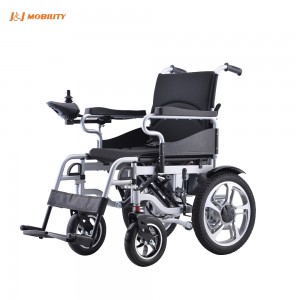What You Should Know About the Motor of Electric Wheelchairs
The motor is a crucial component of an electric wheelchair, powering it and ensuring smooth operation. Understanding how the motor works and how to care for it is essential for users. Here’s what you should know:
Types of Electric Wheelchair Motors
There are primarily two types of motors used in electric wheelchairs: brushed motors and brushless motors. Here are the key differences between them:
Brushed Motors:
Brushed motors are mechanically driven, which allows the wheelchair to start or stop without inertia. While this offers a smoother initial operation, brushed motors have some drawbacks, including lower efficiency, tendency to overheat, shorter lifespan, and higher maintenance needs.
Brushless Motors:
Brushless motors are electronically driven, requiring less maintenance and generating lower noise. They also have a longer lifespan compared to brushed motors. However, they tend to be more complex, costlier, and require an electronic controller.
When choosing between the two, consider your specific needs and preferences.
How to Maintain Your Electric Wheelchair Motor
Proper maintenance can extend the life of your motor. Here are some essential tips:
Daily Visual Inspections
Regularly check the motor for signs of corrosion or dirt buildup on components. Early detection can prevent more significant issues.
Lubrication Checks
Ensure the motor is adequately lubricated. Proper lubrication helps the motor operate smoothly, but applying it too early or too late can lead to wear and tear.
Regular Bearing Checks
Bearings are prone to wear and can cause noise and vibration if not maintained. Inspect them regularly for dirt buildup and ensure they are well-lubricated.
Minimize Vibrations
While some vibration is inevitable, excessive vibration can shorten the motor’s lifespan. If you notice abnormal vibrations, turn off the power and identify the source. This could be a mechanical issue; removing belts or disconnecting loads may help. If problems persist, consult a professional.
Address Noise Issues
If your wheelchair produces unusual noises, investigate the following:
Motor Sounds: Familiarize yourself with the normal sounds of your new motorized wheelchair to identify any abnormalities.
Frame Components: Check the joints and screws in the wheelchair frame, as loose components can create noise.
Bearings: Worn bearings can also contribute to noise.
Belts and Gears: Misaligned belts or gears may cause sounds that need attention.
If you identify the source of the noise but cannot resolve the issue, seek help from a professional technician.
When to Replace Old Motors
The lifespan of electric wheelchair motors is finite. Consider replacing them when you notice:
The wheelchair is not functioning correctly due to motor issues.
A strange burning smell emanates from the motor.
Unusual or loud sounds are coming from the motor.
If you experience any of these issues, it’s advisable to replace the motor or consult a professional for guidance.
In summary, while electric wheelchair motors are generally durable when properly maintained, addressing any issues promptly is essential for safe and efficient operation. Regular care can prevent most problems, ensuring that the wheelchair remains reliable and functional for its user.
Post time: Oct-23-2024


